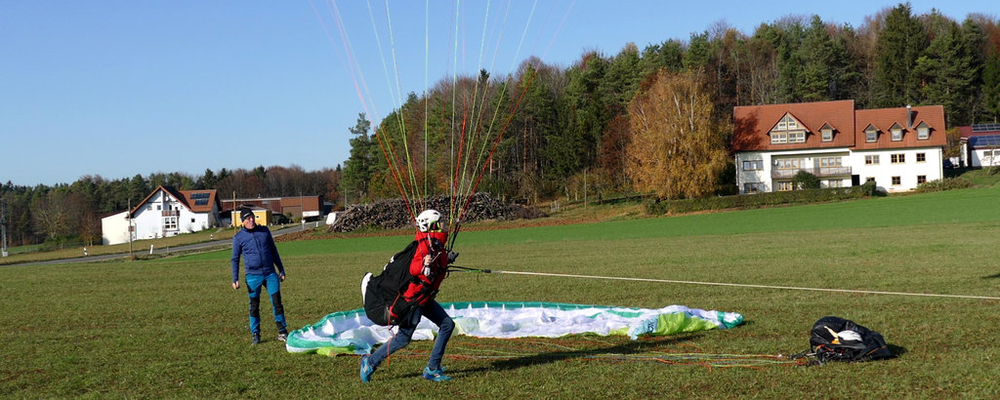
Welcome progress with the ELOWIN
More than 260 successful launches with NOVA’s electric winch

The improvements to the winch were tested using a pre-series model at the Nordbayerischen Drachen- und Gleitschirmfligern (NBDF) Club in Siegritz, Germany and at the Bamberger Gleitschirmclub in Hohenpöltz, Germany. Reading the respective ELOWIN stories on the two club websites, one can really see the joy and motivation with which the tow pilots work on improving the electric winch. And the great team spirit should also be noted.
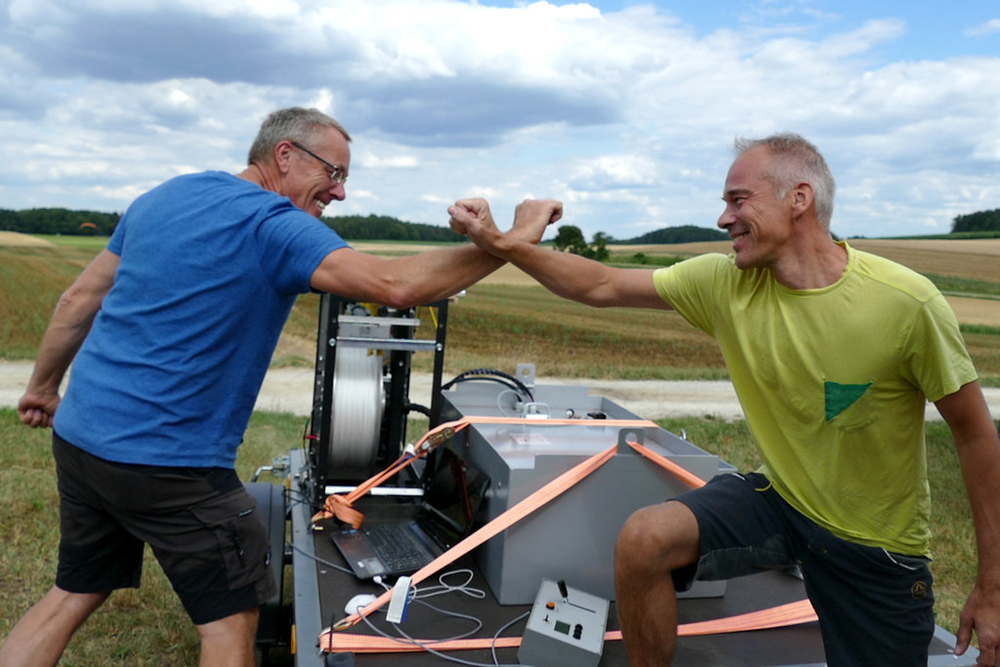
In the meantime, the ELOWIN has already seen a number of significant developmental steps. Particular milestones in the design of the electric winch were:
- In July 2020, delivery and first launches with the pre-series ELOWIN took place in Siegritz. Willi Schaeper (NBDF) and Christian Wehrfritz (NOVA) congratulate each other (covid-safe, of course) on the first successful launch with the ELOWIN in Siegritz.
- This was followed by further optimisation of some components, such as the drum and rope guide.
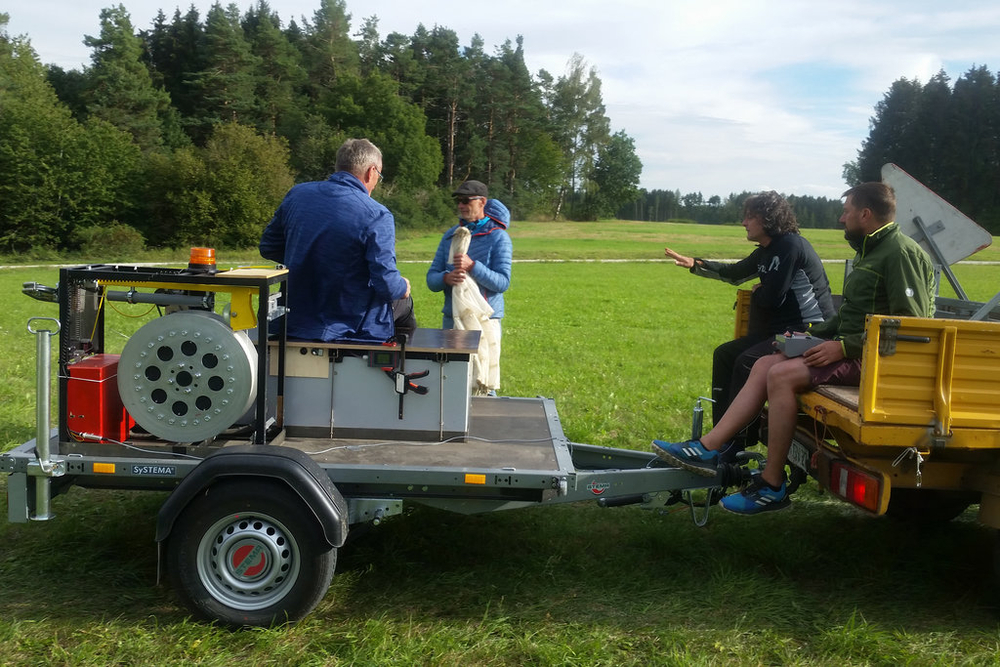
- On the 6th September 2020, 22 launches were carried out with the ELOWIN in Hohenpöltz, 19 of which were mobile tows (open throttle - pay out - open throttle) and also seven tandem flights. The particular thing about these tows… the tow path has curves and is immediately next to corn fields (as can be seen in this video), and a cycle path also crosses the route. In this case the ELOWIN has special advantages in comparison to static winches or even classic payout winches. Take off is performed with a stationary winch approx. 400 m from the launch point with good visibility and little cable laid out (not over the cycle path!). After launch, the winch travels swiftly, at approx. 70 km/h to the end of the tow path, paying out cable as it does so. Once there, the vehicle stops and pulls the cable in again until the pilot gives the signal to release.
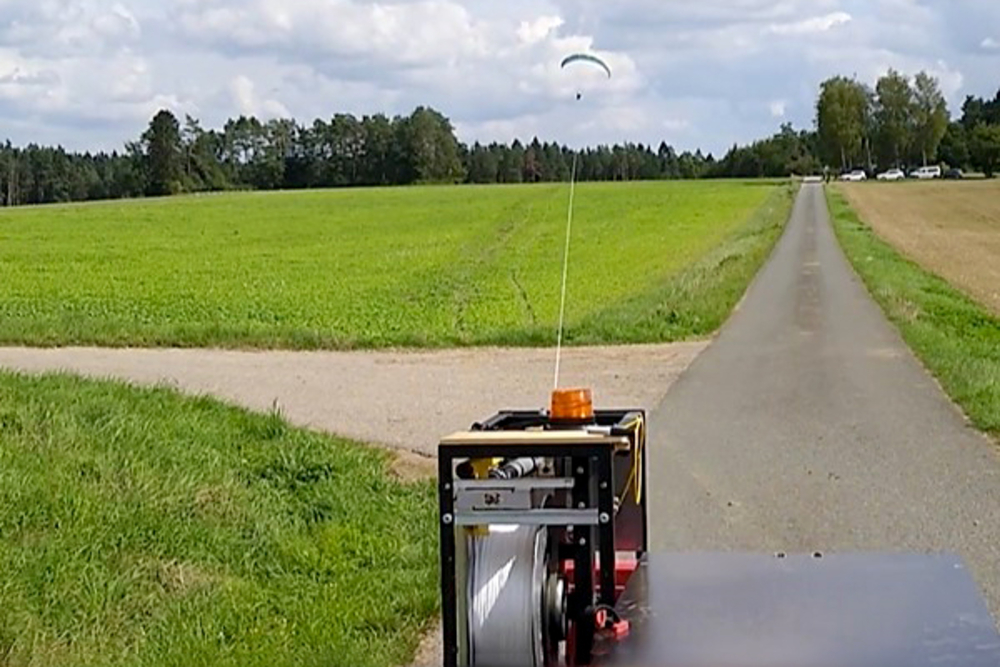
If there is traffic on the tow path (tractor, cyclist, pedestrian, etc.), the winch could be stopped without any problem, continue the tow in a stationary position, and continue again when the path is clear. And with constant pulling force for the pilot throughout. With the throttle open, the energy generated is not "burned up" in a torque converter or a brake, as is usually the case, but is fed back into the battery as a charging current.
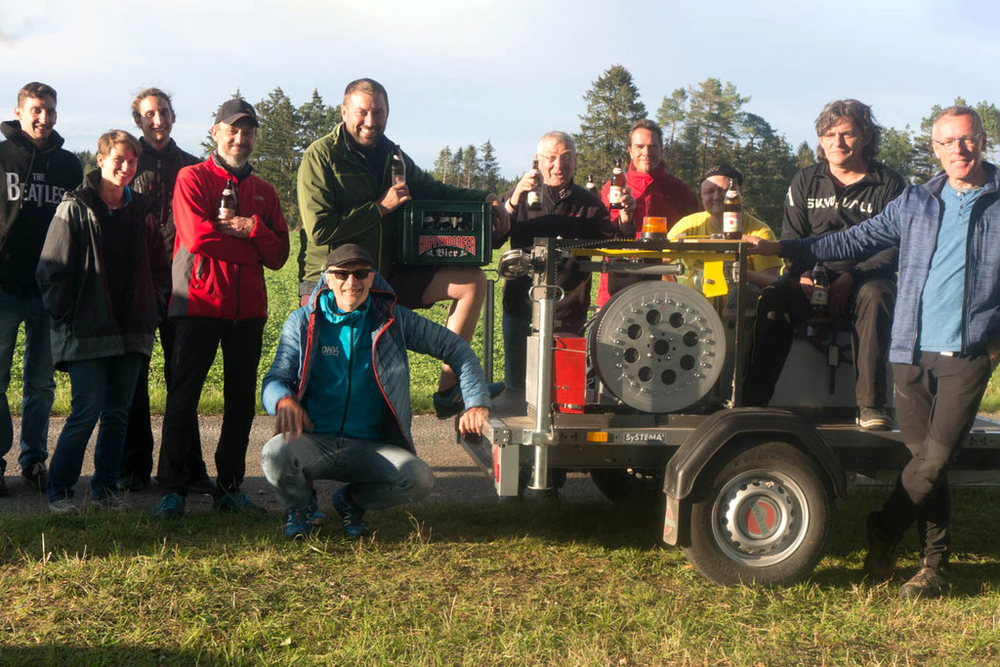
After the successful towing day, all participants were delighted with the safe, quiet tows with potentially record-breaking release heights, and with the ease of operation of the ELOWIN. In future the ELOWIN with battery is to be mounted directly on the towing vehicle, without a trailer.
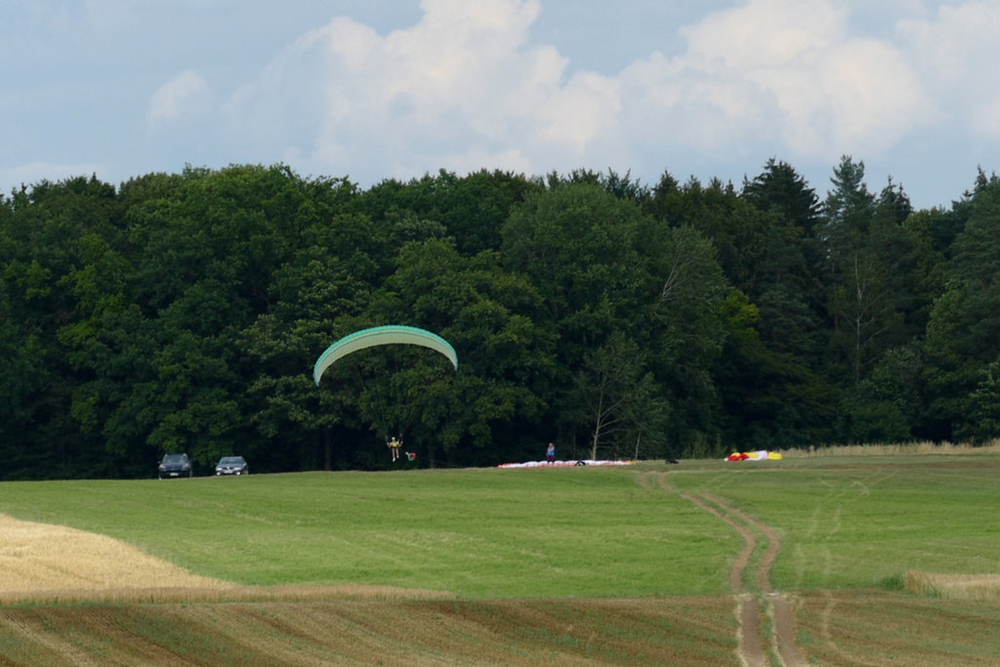
More successful testing days with the ELOWIN produced the following results:
On the 12th September, a further 37 launches were carried out at Siegritz. The following day 35 tows - at an average interval of 8 minutes. A single battery charge (with 96 V, 160 Ah, 15 kWh) provided the power for all 72 take offs. And more than 30% of capacity remained.
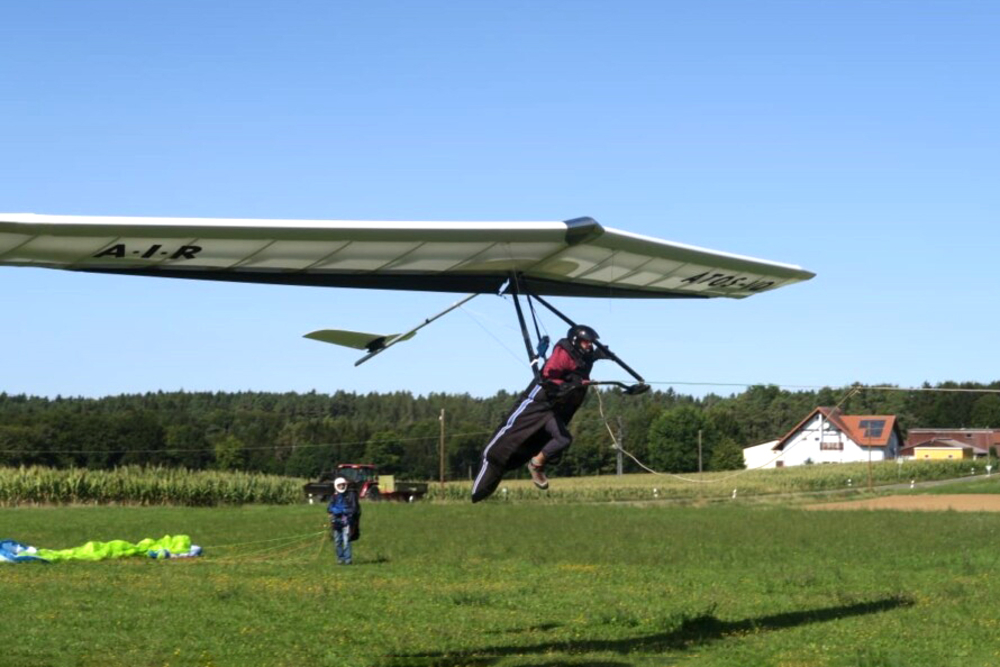
For the 19th September, the test operation records 42 launches, including four hang-gliders (ATOS rigid wings) towed at 130 daN and 60 km/h. The towing frequency was again around 8 minutes, mostly with a force of 100 - 130 daN and with only one drum.
At the beginning of November, the ELOWIN remote control was used for about 15 take offs, 10 of them with self-tow – meaning the pilot operated the winch himself from the air. This mode of operation is currently not certified, but these tows were used for testing for future certification.
Seven pilots tested the remote control with EN A, B and C wings. There were also some tests with aborted take offs and deliberate aborts in the middle of the tow with subsequent towing resumed. The ELOWIN more than met the requirements and ensured a safe and controlled process. This also resulted in some ideas for ergonomic improvements.
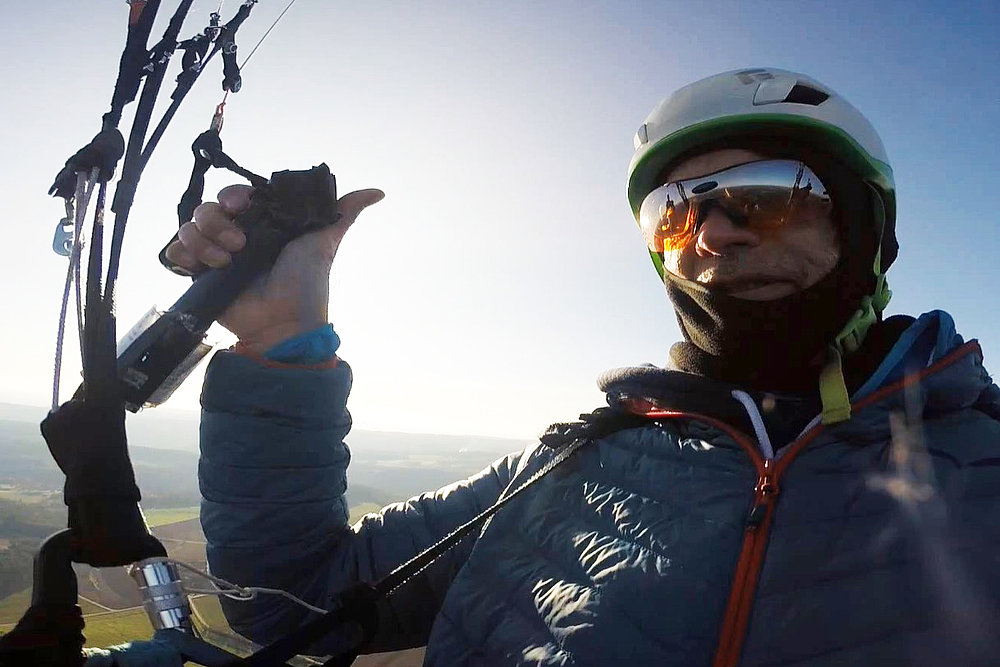
Roland Börschel from the DHV also tested self-launching using the remote control.
In total, more than 260 launches and numerous other towing tests have now been carried out with this version of the ELOWIN. Now new ELOWIN winch modules are being built and tested again, taking into account the knowledge gained. The next step will be serial production.

We are pleased to see an exciting article (in German) by DHV board member Roland Börschel about the ELOWIN in the current January/February issue (No. 227) of the DHV-Info magazine. He interviews the ELOWIN experts about the course of the project so far and writes about the history and the future of electric winches. You can also directly download this article here - With the kind permission of the author Roland Börschel and the DHV.
You can read about the beginnings of ELOWIN and also the technical data in our previous article about the NOVA ELOWIN (NOVA ELOWIN is ready for test mode). There is also a (German) interview by Hartmut Schlegel with Andreas Hochscherff (the initiator of ELOWIN) about the origins and development of the project. Of course we will keep you up-to-date with any new developments.
If you have any questions, don't hesitate to contact us at elowin@nova.eu.